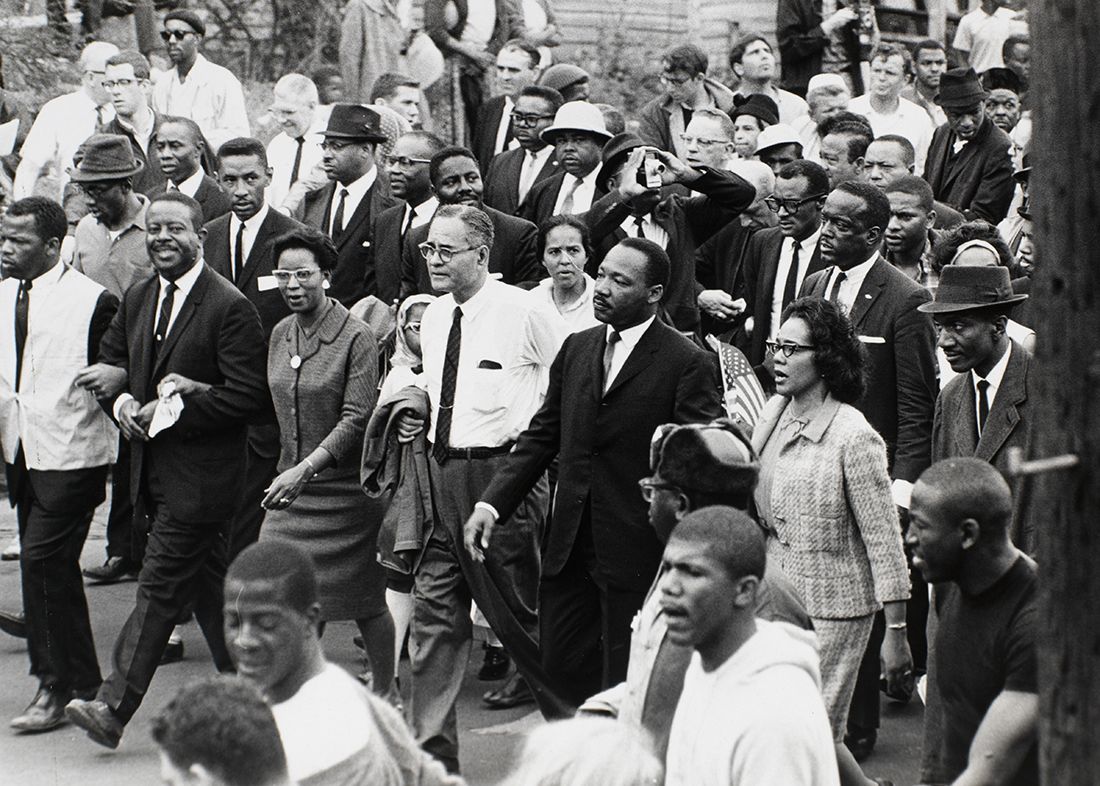On March 21, 1965, under the watchful gaze of hundreds of National Guard troops, a determined line of civil rights demonstrators began their third march from Selma to Montgomery, Alabama. Led by Dr. Martin Luther King Jr., this historic march, culminating in the passage of the Voting Rights Act later that year, marked a critical turning point in the fight for racial equality in the United States.
A Prelude to March: The third Selma to Montgomery march was born from the ashes of two earlier attempts tragically cut short by brutal violence. On March 7th, 1965, “Bloody Sunday,” state troopers and local law enforcement savagely attacked peaceful marchers attempting to cross the Edmund Pettus Bridge, shocking the nation with their brutality. Despite this setback, the movement remained undeterred. On March 9th, a second attempt was halted by a federal court injunction.
Determined Steps Forward: Undeterred by violence and legal obstacles, Dr. King and other civil rights leaders secured federal protection for the third march from President Lyndon B. Johnson. Armed with a federal court order and accompanied by over 2,000 National Guard troops, the marchers set off on March 21st. This time, they were allowed to cross the Edmund Pettus Bridge, a symbolic victory but only the first step in a long journey.
The Long Walk to Justice: The 54-mile march to Montgomery took five days, each step echoing with the demands for voting rights and racial equality. Thousands joined along the way, swelling the ranks and amplifying the message of the movement. Local communities provided hospitality, offering food and shelter to the weary marchers. The national spotlight remained fixed on Selma, capturing the struggle and drawing support from across the country.
Reaching Montgomery: On March 25th, the marchers arrived in Montgomery, greeted by an estimated 25,000 supporters. Dr. King delivered a powerful speech at the state capitol, calling for equality under the law and the right to vote for all Americans. This rallying cry reverberated across the nation, further fueling the demand for legislative action.
A Legislative Turning Point: The success of the Selma to Montgomery marches, coupled with the horrific images of “Bloody Sunday,” galvanized public opinion and pressured Congress to act. President Johnson, moved by the marchers’ courage and public outrage, delivered a powerful televised address calling for a Voting Rights Act. Just five months later, in August 1965, President Johnson signed the landmark Voting Rights Act into law, outlawing discriminatory voting practices and prohibiting literacy tests that had long disenfranchised Black voters.
A Legacy of Resilience: The third Selma to Montgomery march stands as a testament to the courage, resilience, and determination of the civil rights movement. It showcased the power of nonviolent protest and the unwavering commitment of Dr. King and countless others to dismantle the deeply entrenched structures of racial discrimination. Although the Voting Rights Act has been weakened in recent years, the legacy of Selma remains: a beacon of hope, a reminder of the ongoing fight for equality, and a call to action for future generations.
Beyond the March: The story of Selma to Montgomery goes beyond the 54-mile march. It encompasses the countless individuals who risked their lives to fight for justice, the local communities that provided support, and the ongoing struggle for voting rights for all Americans. By remembering Selma, we honor the sacrifices made, celebrate the progress achieved, and recommit ourselves to building a more just and equitable society.












Donna
This is great. I live all the articles
Donna
This is great. I love all the articles